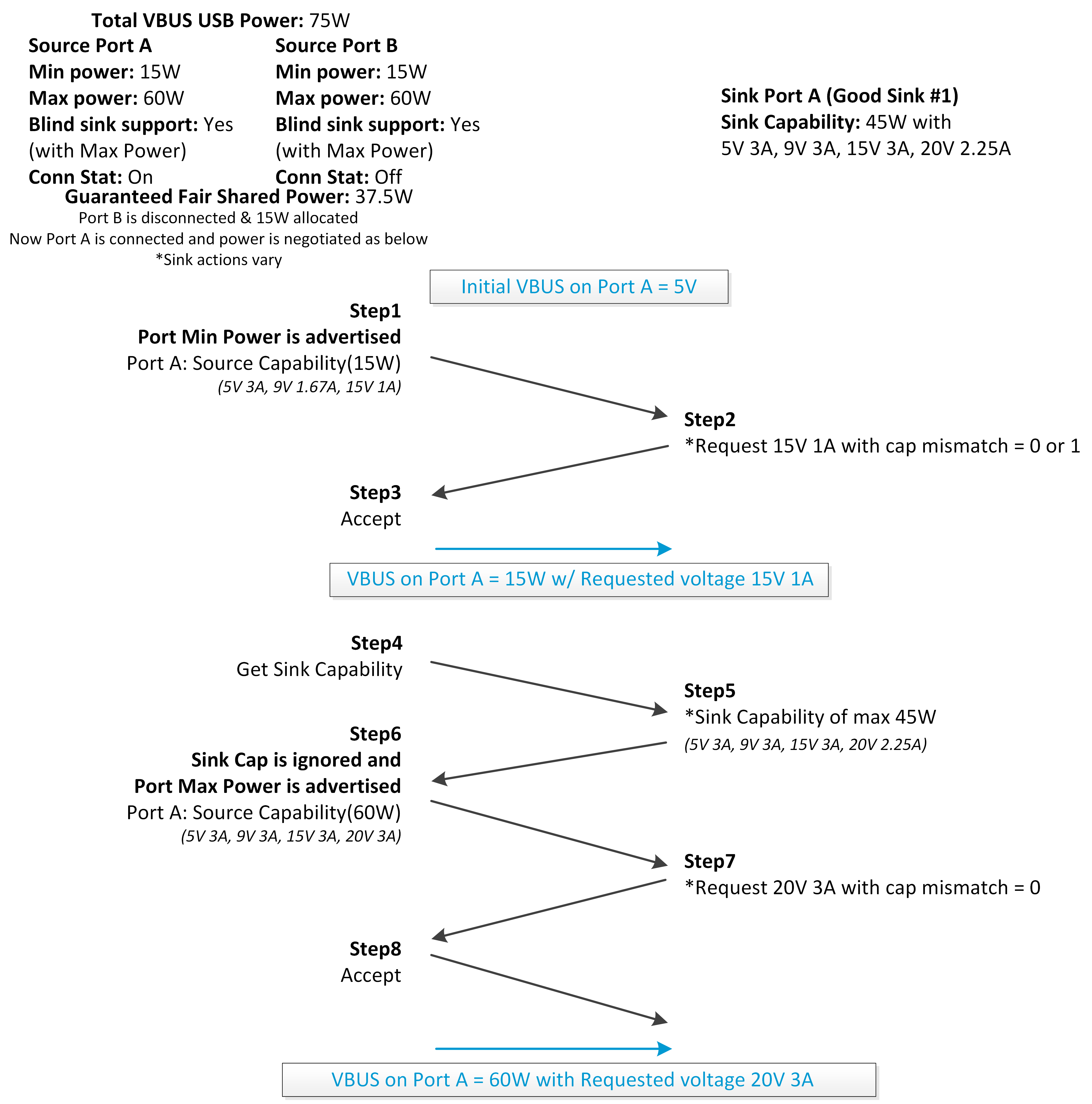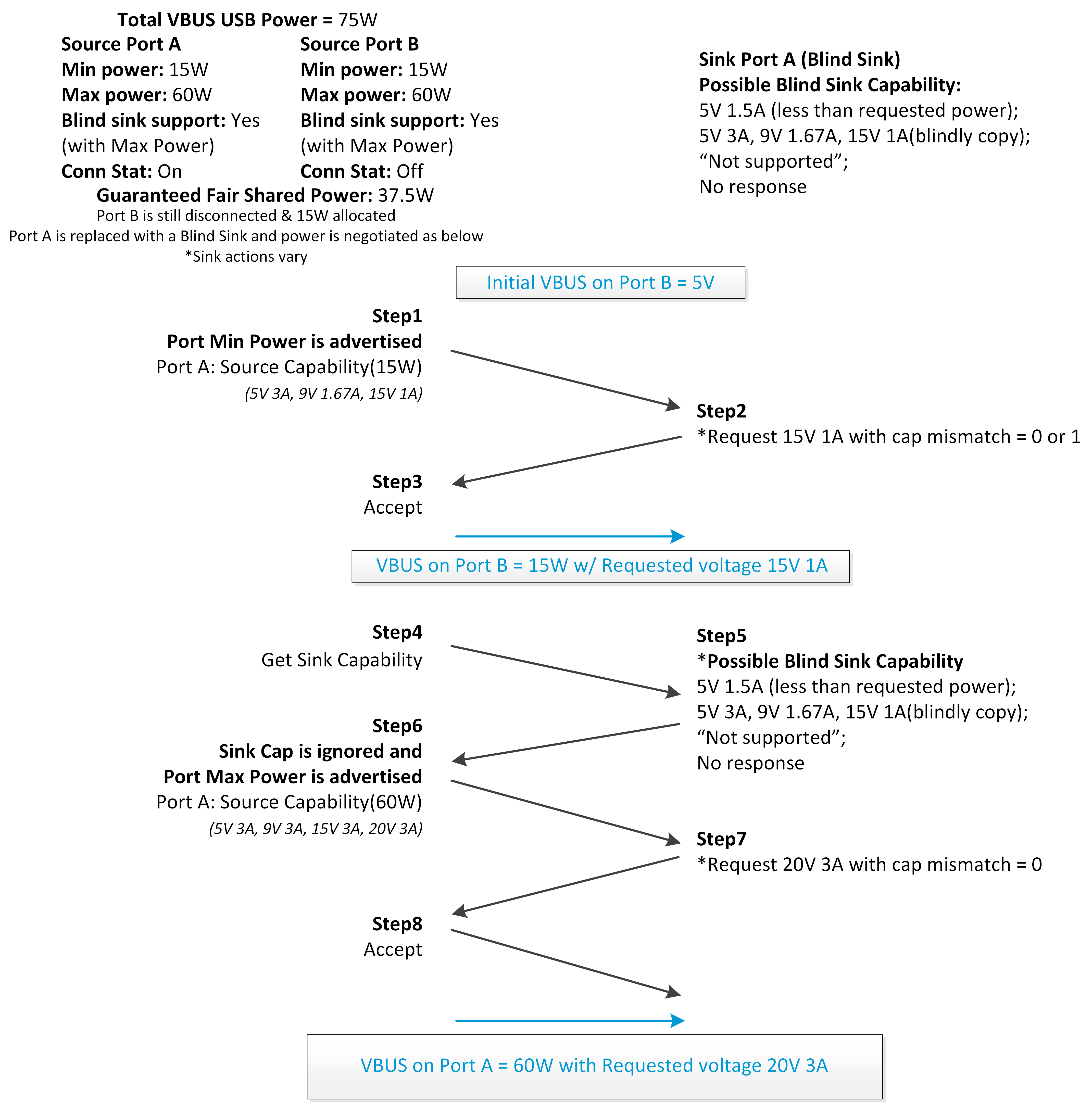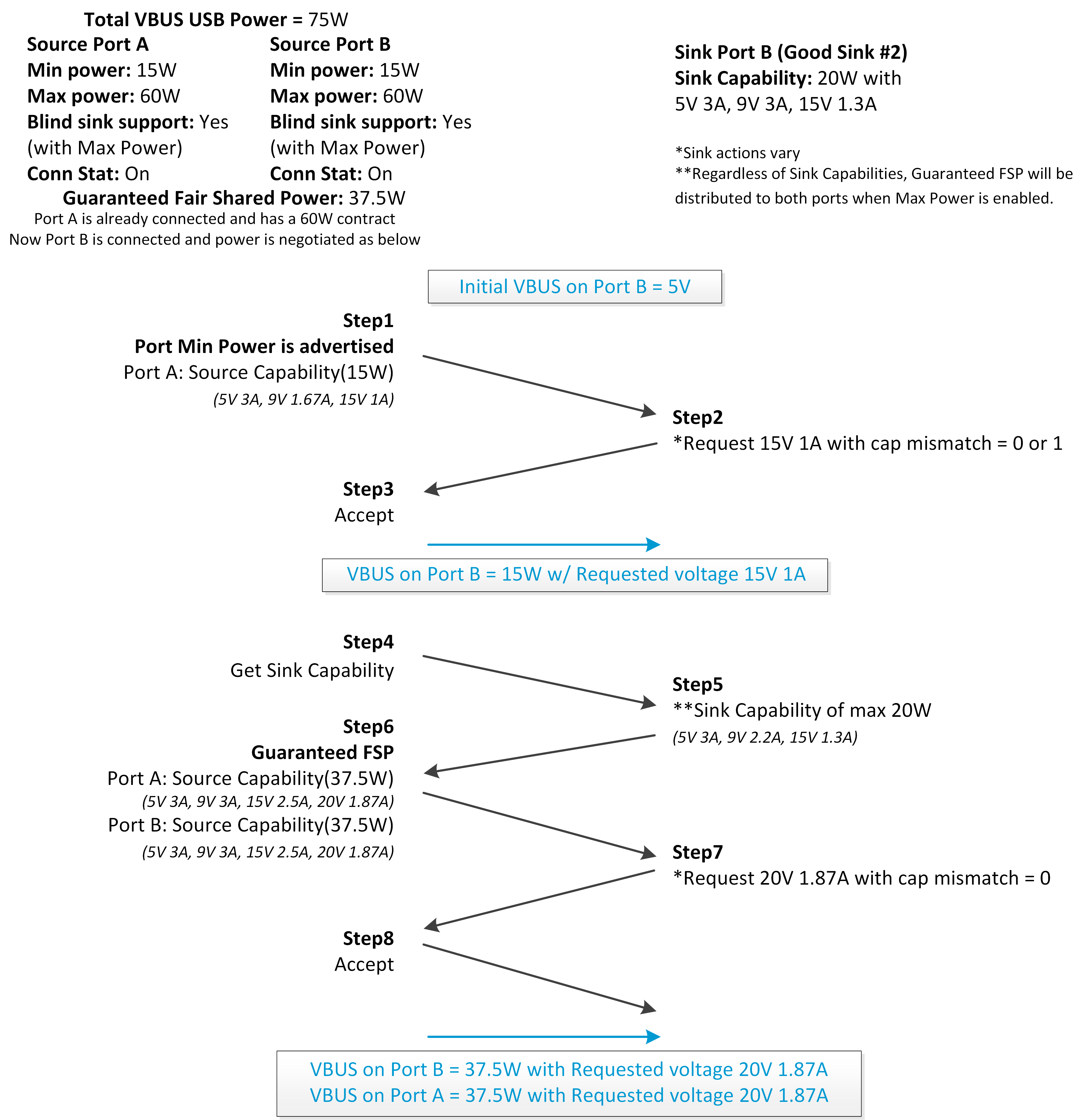SLVAFG6B December 2022 – November 2024 TPS25762-Q1 , TPS25763-Q1 , TPS25772-Q1
5.2.2 FSP Policy Example – Blind Sink Support With Max Power
This section provides three additional examples of Fair Share Power Policy's power distribution, but with Blind Sink Support and Max Power enabled for both ports, and are shown in Table 5-9. With these two FSP settings enabled, Port Max Power is always advertised after the initial Source Capabilities message regardless of the Sink's behavior. The SPM Engine Parameters for these examples are the same as shown in Table 5-6
| Port A | Port B | SPM Operation Description | |
|---|---|---|---|
| Initially Allocated | 15W | 15W | Min Power is initially allocated for Port A and Port B. |
| Scenario 1: Port A connects to Good Sink 1. Port B is unconnected. | |||
| Source Cap 1 | 15W | The first Source Cap is sent to Port A's Sink with Port Min Power. | |
| Sink Request | 15W | Grant 15W to Port A. | |
| Sink Cap | 45W | Source sends Get Sink Cap message to Port A and max 45W Sink Cap is returned. | |
| Source Cap 2 | 60W | Source Cap is sent again with Port Max Power since Max Power is enabled. | |
| Sink Request | 60W | Port A Sink requests 60W. | |
| Power Distributed to Sink | 60W | 60W delivered to Port A Sink. | |
| Scenario 2: Port A is replaced with a Blind Sink. Port B is still unconnected. | |||
| Source Cap 1 | 15W | The first Source Cap is sent to Port A's Sink with Port Min Power. | |
| Sink Request | 15W | Grant 15W to Port A. | |
| Sink Cap | 15W | Source sends Get Sink Cap message to Port A. Source Cap = Sink Cap is returned, but is a don't care with Max Power enabled. | |
| Source Cap 2 | 60W | A Source Cap is sent again with Port Max Power. | |
| Sink Request | 60W | Port A Sink requests 60W. | |
| Power Distributed to Sink | 60W | 60W is distributed to Port A Sink. | |
| Scenario 3: Port B connects to Good Sink 2. Port A continues to deliver 60W to Blind Sink. | |||
| Source Cap 1 | 15W | The first Source Cap is sent to Port B's Sink with Port Min Power. | |
| Sink Request | 15W | Grant 15W to Port B. | |
| Sink Cap | 20W | Source sends Get Sink Cap message to Port B and max 20W Sink Cap is returned. | |
| Source Cap 2 | 37.5W | 37.5W | Max Power is enabled, so Per Port Guaranteed FSP is advertised to both Sinks regardless of Sink Capabilities. |
| Sink Request | 37.5W | 37.5W | Port A and B's Sinks request 37.5W. |
| Power Distributed to Sinks | 37.5W | 37.5W(1) | Each Sink gets Per Port Guaranteed FSP of 37.5W. |
Figure 5-8, Figure 5-9, and Figure 5-10 show the PD negotiation flow of the FSP examples from Scenario 1, Scenario 2, and Scenario 3 of Table 5-9, respectively.
 Figure 5-8 FSP Negotiation With Blind
Sink Support and Max Power - Scenario 1
Figure 5-8 FSP Negotiation With Blind
Sink Support and Max Power - Scenario 1 Figure 5-9 FSP Negotiation With Blind
Sink Support and Max Power - Scenario 2
Figure 5-9 FSP Negotiation With Blind
Sink Support and Max Power - Scenario 2 Figure 5-10 FSP Negotiation With Blind
Sink Support and Max Power - Scenario 3
Figure 5-10 FSP Negotiation With Blind
Sink Support and Max Power - Scenario 3